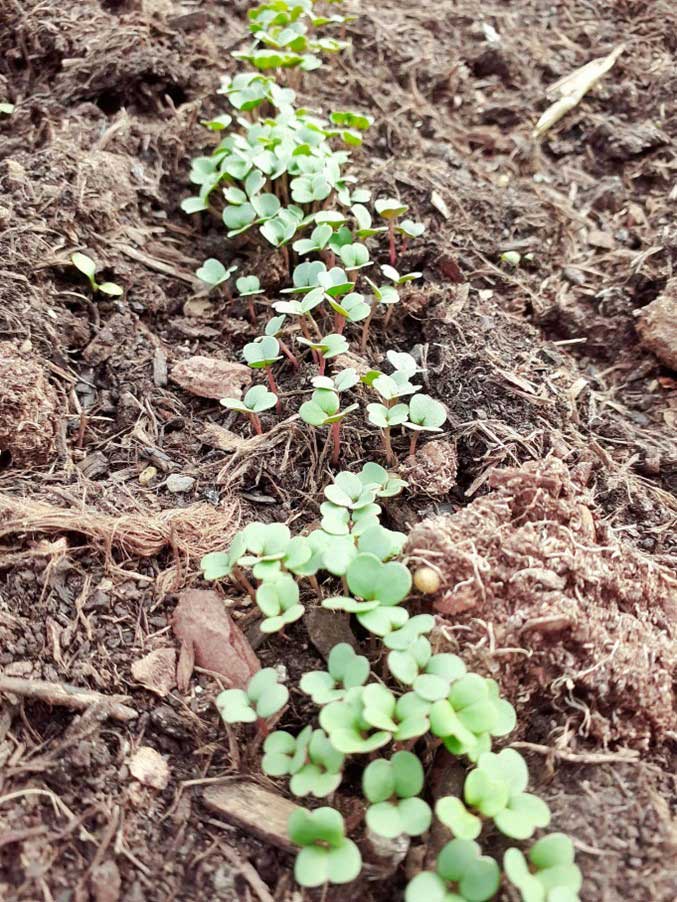Part 1: Propagation by seed
9. Sowing seed outdoors in drills
Many plants can be successfully grown from seed outdoors if a good seedbed is prepared which is free of weeds and has a granular (crumb) soil texture or compost incorporated into the top layer. Seeds can be planted outdoors from spring until autumn in the UK.
Sowing outdoors means sowing the seed in the plant's final growing place. Natural timings for germination and growth will take place, unlike indoor sowing where the seed can be tricked into early germination. Seeds can be sown outdoors when the soil is warm and moist, this usually means late spring to early summer for the start of the growing season until autumn for the end of the season in the UK.

Amber Crowley / public domain
Plants naturally scatter their seeds, and they grow where they land, however when growing seeds outdoors people often wish for a bit more control as to where each plant is.
Drills allow for easy weeding between rows as sown seedlings and weed seedlings can be differentiated. They also allow space for hoeing between the rows until the plants get tall and wide enough to cover the soil and prevent weeds growing. The soil between drills can be mulched to reduce weed growth.
Process
- To prepare the ground for seed sowing, dig over and/or remove weeds.
- When the ground is warm enough to start sowing, rake the soil to create a good tilth (crumb-like in texture) and create a shallow drill or depression in a straight line across the seed bed. The depth and distance between drills or rows is dictated by the final plant size and to avoid overcrowding, seed packet instructions will give this information.
- Irrigate before sowing, place the seeds into the length of the drill and cover gently with soil.
- Label each row.
- Apart from watering during very dry spells, nature will do the rest.

Andrew Curtis via Wikimedia / CC BY-SA 2.0
There can be problems associated with outdoor sowing, such as heavy rains causing rot or ‘dampening off’ of seedlings, and pests such as slugs, snails, mice and pigeons eating the seeds or seedlings. Extreme weather may cause damage to the seed bed or seedlings which are very susceptible to drying out, waterlogging, frost or sun scorch when young.
Visit a garden centre or shop which sells seeds next time you are in town. Read the back of the seed packets to see the different sowing instructions. Some seeds can only be sown inside as they need higher temperatures to germinate, but others can only be sown outside as they dislike being transplanted (for example, carrots). Still others can be sown inside or outside.
Note that seeds like to be sown at different depths. As a general rule, very small seeds like to be on the surface of the soil, not covered at all, whereas larger seeds like to be buried to their own depth under the soil (for example, a 1cm seed likes a covering of 1cm of soil). There are some exceptions to this as some seeds need light and others need the dark to germinate.
Also note that some seeds need soaking or cold treatments to mimic the natural weather conditions and break their dormancy before they will germinate.